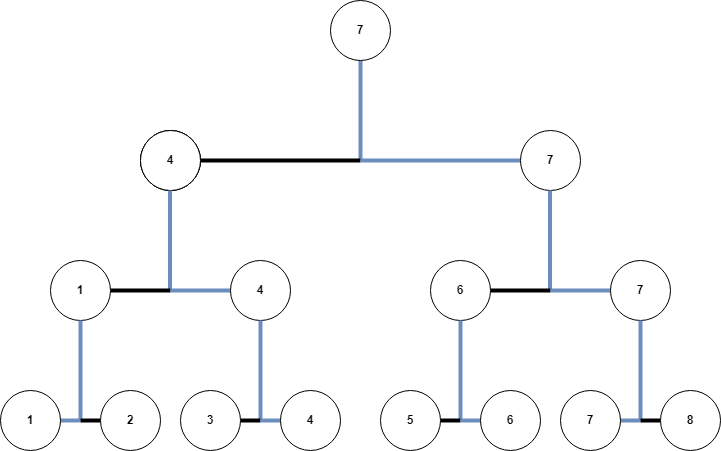CF1713D.Tournament Countdown
普及/提高-
通过率:0%
AC君温馨提醒
该题目为【codeforces】题库的题目,您提交的代码将被提交至codeforces进行远程评测,并由ACGO抓取测评结果后进行展示。由于远程测评的测评机由其他平台提供,我们无法保证该服务的稳定性,若提交后无反应,请等待一段时间后再进行重试。
题目描述
This is an interactive problem.
There was a tournament consisting of 2n contestants. The 1 -st contestant competed with the 2 -nd, the 3 -rd competed with the 4 -th, and so on. After that, the winner of the first match competed with the winner of second match, etc. The tournament ended when there was only one contestant left, who was declared the winner of the tournament. Such a tournament scheme is known as the single-elimination tournament.
You don't know the results, but you want to find the winner of the tournament. In one query, you select two integers a and b , which are the indices of two contestants. The jury will return 1 if a won more matches than b , 2 if b won more matches than a , or 0 if their number of wins was equal.
Find the winner in no more than ⌈31⋅2n+1⌉ queries. Here ⌈x⌉ denotes the value of x rounded up to the nearest integer.
Note that the tournament is long over, meaning that the results are fixed and do not depend on your queries.
输入格式
The first line contains a single integer t ( 1≤t≤214 ) — the number of test cases.
The only line of input contains a single integer n ( 1≤n≤17 ).
It is guaranteed that the sum of 2n over all test cases does not exceed 217 .
输出格式
The interaction for each test case begins by reading the integer n .
To make a query, output "? a b" ( 1≤a,b≤2n ) without quotes. Afterwards, you should read one single integer — the answer for your query. You can make at most ⌈31⋅2n+1⌉ such queries in each test case.
If you receive the integer −1 instead of an answer or a valid value of n , it means your program has made an invalid query, has exceed the limit of queries, or has given incorrect answer on the previous test case. Your program must terminate immediately to receive a Wrong Answer verdict. Otherwise you can get an arbitrary verdict because your solution will continue to read from a closed stream.
When you are ready to give the final answer, output "! x" ( 1≤x≤2n ) without quotes — the winner of the tournament. Giving this answer does not count towards the limit of queries. After solving a test case, your program should move to the next one immediately. After solving all test cases, your program should be terminated immediately.
After printing a query or the answer do not forget to output end of line and flush the output. Otherwise, you will get Idleness limit exceeded. To do this, use:
- fflush(stdout) or cout.flush() in C++;
- System.out.flush() in Java;
- flush(output) in Pascal;
- stdout.flush() in Python;
- see documentation for other languages.
Hacks
To hack, use the following format.
The first line contains an integer t ( 1≤t≤214 ) — the number of test cases.
The first line of each test case contains a single integer n ( 1≤n≤17 ).
The second line of each test case contains 2n numbers on a line — the number of wins of each participant. There should be a sequence of matches that is consistent with the number of wins.
The sum of 2n should not exceed 217 .
输入输出样例
输入#1
1 3 2 0 2
输出#1
? 1 4 ? 1 6 ? 5 7 ! 7
说明/提示
The tournament in the first test case is shown below. The number of wins is [1,0,0,2,0,1,3,0] .
 In this example, the winner is the 7 -th contestant.
In this example, the winner is the 7 -th contestant.